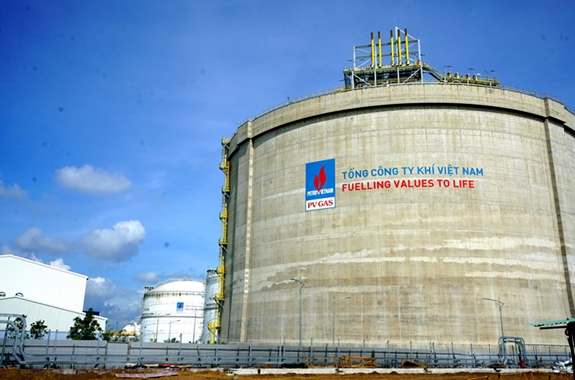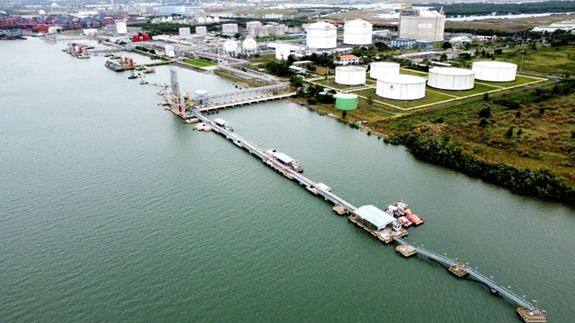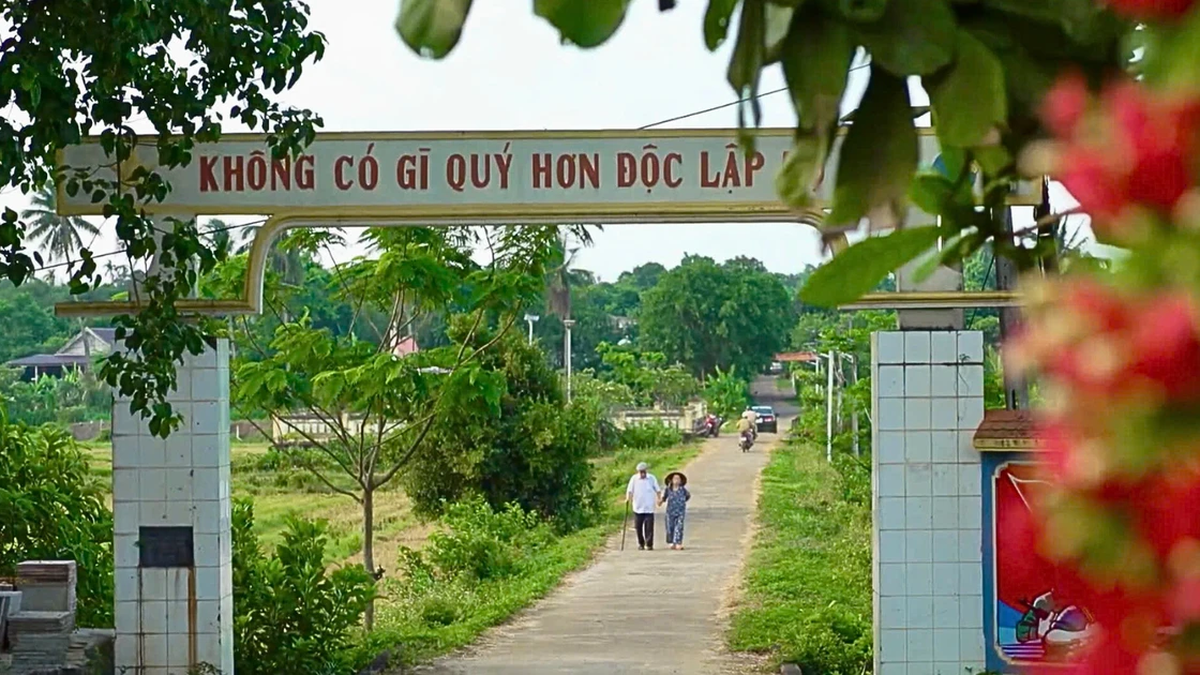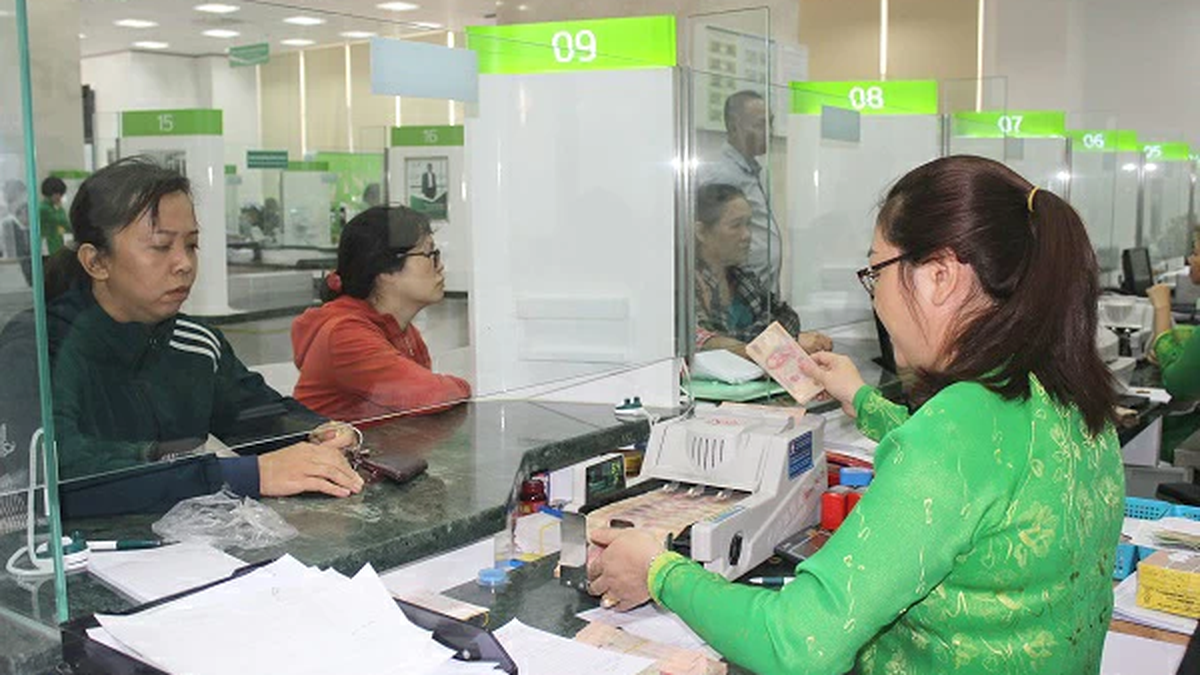The national power development plan for the 2021-2030 period, with a vision to 2050 (Power Plan VIII) has determined that renewable gas-fired thermal power from LNG (or "LNG gas") will account for more than 14.9% of the total capacity of the entire national power generation system by 2030 and is one of the sources that helps ensure adequate, stable and safe supply of the national power system.
According to the Power Plan VIII, realizing the goal of developing gas-fired thermal power (including LNG thermal power) requires promoting the development of an efficient, competitive and sustainable LNG gas market in Vietnam. When the LNG gas industry develops smoothly, it will contribute positively to the country's energy security and sustainable development.
Promoting the development of an efficient and competitive LNG market
According to analysts, due to its stable, continuous and flexible operation, gas-fired thermal power (including domestic gas and LNG) needs to be maintained, ensuring the necessary proportion to regulate the load, maintain the stability of the power system, and absorb large-scale renewable energy sources. The VIII Power Plan has determined that by 2030, gas-fired thermal power (LNG thermal power accounts for 14.9%) will account for about 24% of the total capacity of the entire power generation system and is one of the sources that helps ensure adequate, stable and safe supply for the national power system.
In addition, according to forecasts and calculations, in the coming years, domestic gas supply will decrease, and new gas fields will not be enough to compensate for the shortage. Therefore, importing LNG to supplement sources and meet domestic demand is an inevitable and urgent trend. To promote the development of the LNG market, it is necessary to solve a number of issues related to infrastructure and policy mechanisms. In particular, it is necessary to build new, modern LNG port infrastructure, according to international standards, in strategic locations, capable of receiving large LNG tankers.
At the same time, build a system for storing and distributing LNG and LNG-regenerated gas in consumption areas, including building small-scale LNG storage, fleets, specialized vehicles for transporting LNG, distribution stations and re-gasification systems to supply LNG to electricity customers, industrial zones as well as consumers. Secondly, the development of the LNG industry needs to go hand in hand with safety management and environmental protection, so it is necessary to comply with regulations, standards, processes... to ensure safety in the production, transportation, storage and use of LNG-regenerated gas.
 |
Thi Vai LNG storage with modern technology, connected to PV GAS's existing gas supply infrastructure will increase storage capacity, meet the goal of stable development, and increase PV GAS's LNG competitive advantage. |
Specifically, LNG imports need to be planned synchronously and focused with the infrastructure system for receiving, distributing and consuming markets, taking advantage of the existing gas distribution system to optimize investment costs. Since most of LNG will be used for power generation, optimizing investment will help stabilize and suit electricity production costs, helping to reduce input costs of manufacturing industries in the economy . Synchronous planning and concentration of LNG import projects (not scattered development) helps save social resources, develop the economy and thereby promote the LNG market.
Power Plan VIII also determines that by 2030, 13 new LNG power plants with a total capacity of 22,400 MW will be built, and by 2035, 2 more plants with a capacity of 3,000 MW will be built. The location of these plants will be determined based on demand and regional balance in the Northern, North Central and Southern regions. However, current regulations on construction and investment require the feasibility of gas supply plans for LNG power plants.
This leads to investors in LNG power plants investing in separate, dispersed LNG import terminals according to the configuration: “1 power center (power plant) + 1 LNG import and regasification terminal (or FSRU)”. This means that as many power plants as there are LNG import and regasification terminals will appear, covering the entire length of Vietnam's coastline.
The development of individual LNG terminals with small capacity along with each gas-fired power plant is actually more harmful than beneficial: Not taking advantage of existing infrastructure to reduce additional investment costs; not taking full advantage of natural advantages to form clusters, energy centers, central LNG terminals (LNG Hub) to share common infrastructure (import terminals, pipelines); not optimizing investment costs for developing LNG import infrastructure, system operating costs, etc., which invisibly makes electricity prices higher due to having to "bear" the cost of investing in LNG infrastructure.
 |
| PV GAS Vung Tau port warehouse system is capable of receiving LNG ships with a capacity of up to 100,000 DWT. |
According to the representative of Vietnam Gas Corporation (PV GAS), based on the planning of locations of LNG power plants according to Power Plan VIII and LNG import demand (forecasted to import 14.46 million tons of LNG/year by 2030, and import increase of 1.92 million tons of LNG/year by 2035), PV GAS has researched and believes that, to promote sustainable development, Vietnam's LNG power infrastructure system needs to be developed according to the central LNG warehouse model (LNG Hub).
That is, large-capacity central LNG warehouses provide renewable gas for gas-fired thermal power plants, synchronously connected to the main pipeline system for transporting renewable gas/LNG transportation and distribution system by sea (sea/river, road, rail) to consumers. LNG power plants will connect to pipelines to receive gas from the main pipeline. With this model, it is expected that only 3 central LNG port warehouses (LNG Hub) with a capacity of 3-6 million tons/year/warehouse (with the ability to increase capacity to 10 million tons/year for expansion reserve), located in 3 main areas: Thi Vai area, Ba Ria - Vung Tau province; Son My area, Binh Thuan province and the Northern/North Central region.
Currently, the Thi Vai LNG port project and Son My LNG port project have identified investors. Of which, Thi Vai LNG port is ready for trial operation to officially put into operation. Son My LNG port is in the process of completing procedures to prepare for investment implementation. The State needs to assign tasks to State-owned enterprises or State-owned enterprises holding controlling shares such as Vietnam Oil and Gas Group (PVN), Vietnam Gas Corporation (PV GAS), which are units with a lot of experience in the gas industry as well as certain understanding of the market. Assigning tasks to enterprises such as PVN and PV GAS can help take advantage of financial capacity, experience and existing infrastructure in the gas industry to develop the country's LNG import and distribution infrastructure system.
Currently, PVN and PV GAS own and operate a series of energy and gas industry infrastructure. PV GAS is a leading gas enterprise, currently owning and operating more than 1,500 km of gas pipelines along with storage systems, import and export ports, distribution centers and gas processing plants.
According to calculations, implementing investment in a central LNG warehouse (LNG Hub) in the North/North Central region to synchronously develop the country's LNG import and distribution infrastructure, taking into account the connection and utilization of existing infrastructure to optimize LNG infrastructure investment costs to ensure national energy security, ensure efficiency and maintain the stability of the technical infrastructure system supplying gas nationwide.
In fact, the development of an LNG power infrastructure system for Vietnam according to the central LNG port warehouse model (LNG Hub) as proposed above has been successfully implemented by countries in the region and around the world and ensures overall efficiency.
Regarding the model, countries tend to develop clusters of power plants using LNG with large-capacity LNG receiving ports following the central LNG port warehouse model (LNG Hub) to optimize the cost of developing gas pipeline infrastructure between the receiving port warehouse and power plants.
Regarding the implementation method, the State often assigns the national oil and gas company or a company or organization in which the State holds controlling rights to synchronously implement technical infrastructure for LNG. For example: PTT Group - Thailand, Singapore LNG Company (SLNG) - Singapore, KOGAS Company - Korea, large Japanese corporations such as: Tokyo Gas, Osaka Gas...
Solving gas price difficulties
According to energy experts, LNG prices in the Vietnamese market are determined under the influence of two main factors. The first is the import price of LNG from the world market to Vietnam and the cost of receiving, storing, re-gasifying, and distributing LNG in the Vietnamese market. Depending on the source of LNG import (geography, supplier...), the selection method (parallel negotiation, bidding...), the import method (spot, term...) as well as the investment cost of construction and operation and maintenance of LNG import infrastructure into Vietnam, the price of LNG/re-gas supplied to power plants and consumers can fluctuate.
The second is competitive fuel prices or total equivalent competitive value. Specifically, for LNG sources supplied to industrial customers, competitive fuel prices such as FO, DO, LPG, gasoline, electricity, biomass, biofuels, etc. will affect the price of LNG supplied to customers. For LNG supplied to power plants, the price of electricity from other primary fuel sources, the balance of the power system, the minimum electricity output generated on the system, the mechanism for accepting electricity prices in the competitive power generation market (cost based, price based), the average electricity consumption price, etc. will affect the price of LNG supplied to power plants.
Regarding the source of LNG supplied to industrial customers in the world, it has been confirmed that LNG competes well with liquid fuels such as gasoline and diesel. However, in Vietnam, regasification gas from LNG is a new fuel source, so supporting the completion of the first imported LNG infrastructure at Thi Vai in Vietnam will help reduce distribution costs, helping LNG prices achieve a fair competitive advantage.
For LNG supplied to electricity customers, there should be specific instructions on the method of determining the price of electricity generation from LNG sources, including fuel prices and fuel transportation prices, as well as the method of bidding and generating electricity to the national electricity system to ensure the consumption of LNG by trip (spot) or by multiple term contracts to be able to take advantage of LNG prices in the short and long term, while ensuring a stable supply of LNG for the electricity industry.
In addition, the simultaneous supply of LNG/regenerated gas to many power plants also requires a policy mechanism to allocate imported LNG resources simultaneously with domestic gas consumption during the process of sharing gas distribution system infrastructure to quickly reach an agreement between power plants and LNG suppliers in allocating gas resources.
In summary, to promote the development of the LNG market in Vietnam, there are a number of important and necessary measures. These include investment in infrastructure, clear, feasible and practical policy mechanisms, ensuring effective management and regulation, building a distribution system and market access, and promoting international cooperation. These measures will facilitate the development of the LNG industry, contributing to national energy security and sustainable development of the country.
HOANG HUNG
Source


































































































Comment (0)